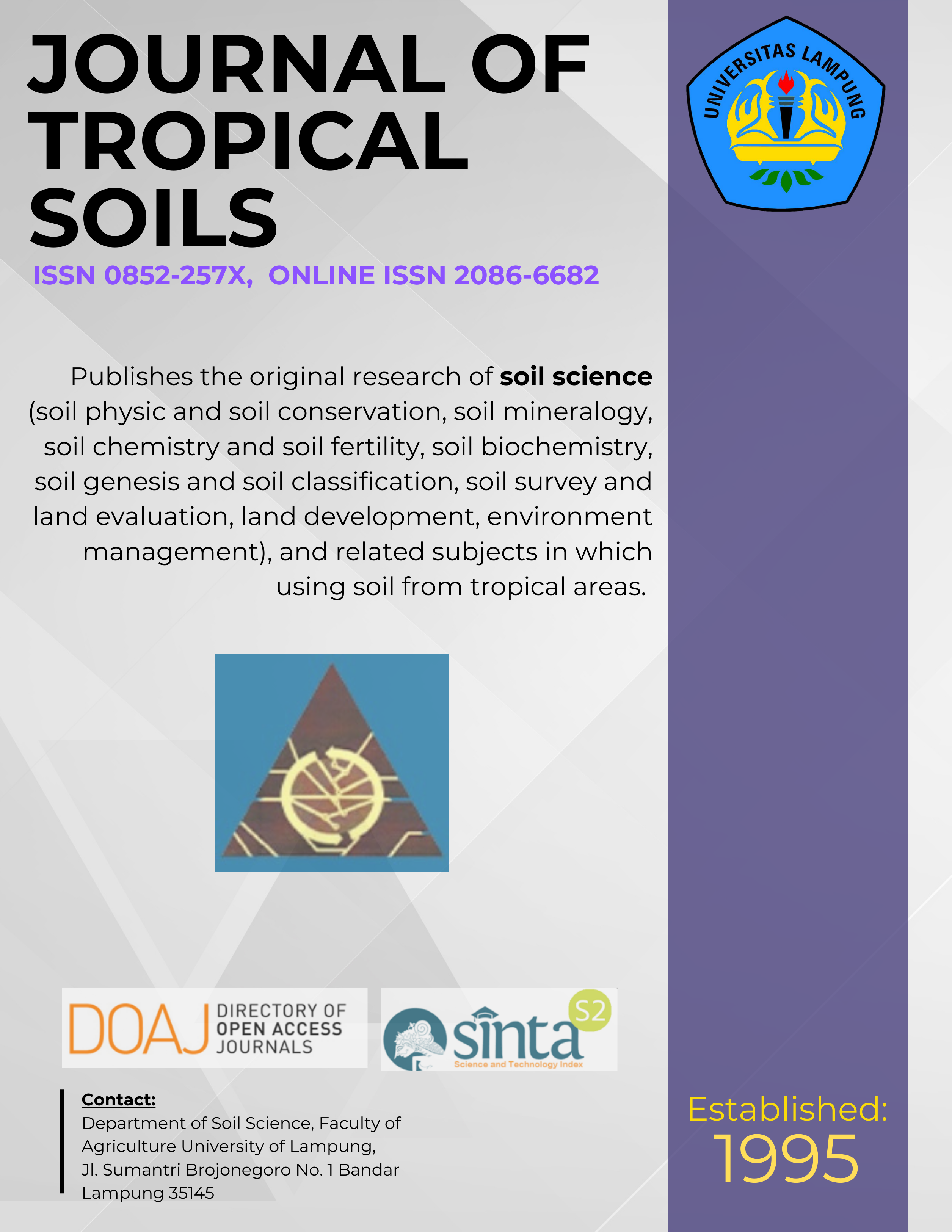Identification and Evaluation of Potential Land Resources to Support the Development of Agricultural Commodities for Food Crops Zone
Main Article Content
Abstract
To support the goverment purpose to reach the food security, a land use study is needed. The aim of the research was to provide an information of characteristics of land resources through the identification and evaluation of potential landresources and that suitable for food crops in Mamuju District South Sulawesi. The research method used landscape approach to mapping land units as the basis for preparing the soil map unit/DEM compared with field data survey. A case study was done in Mamuju District, West Sulawesi the results showed that the land in Mamuju for paddy covering was suitable enough of 115,250 ha and 54,883 ha of marginal fit, while for dryland crops were 106 978 ha was quite suitable and appropriate marginal was 82,592 ha. However, for cocoa fit enough land was 153,397 ha and corresponding marginal was 485,743 ha. Biophysical constraints were the erosion of land use/steep slopes, drainage, seasonal flooding, toxicity and nutrient retention. Direction of land use for agriculture in Mamuju for Rice crop area was 49,345 ha (6.23%), food crops rice and dry land was 10,680 ha (1.35%), dryland crops/crops was 101,785 ha (12.85%), perennial/Cocoa was 90,488 ha (11.42%), and conservation land was 532,245 ha (67.18%).
Keywords : Cland crops, land identification, soil evaluation
[How to Cite: Nurdiyanto AP, Hikmatullah, Asisah, MB Saleh, and SD Tarigan. 2014. Identification and Evaluation of Potential Land Resources to Support the Development of Agricultural Commodities for Food Crops Zone. J Trop Soils 19: 53-61. Doi: 10.5400/jts.2014.19.1.53]
Â
Â
Downloads
Article Details
Section
License for Authors
Authors who publish with this journal agree to the following terms:
- Authors retain copyright and grant the journal right of first publication with the work simultaneously licensed under a Creative Commons Attribution License that allows others to share the work with an acknowledgement of the work's authorship and initial publication in this journal.
- Authors are able to enter into separate, additional contractual arrangements for the non-exclusive distribution of the journal's published version of the work (e.g., post it to an institutional repository or publish it in a book), with an acknowledgement of its initial publication in this journal.
- Authors are permitted and encouraged to post their work online (e.g., in institutional repositories or on their website) prior to and during the submission process, as it can lead to productive exchanges, as well as earlier and greater citation of published work (See The Effect of Open Access).
License for Regular Users
Other regular users who want to cite, distribute, remix, tweak, and build upon author’s works, even for commercial purposes, should acknowledge the work’s authorship and initial publication in this journal, licensed under a Creative Commons Attribution License.

